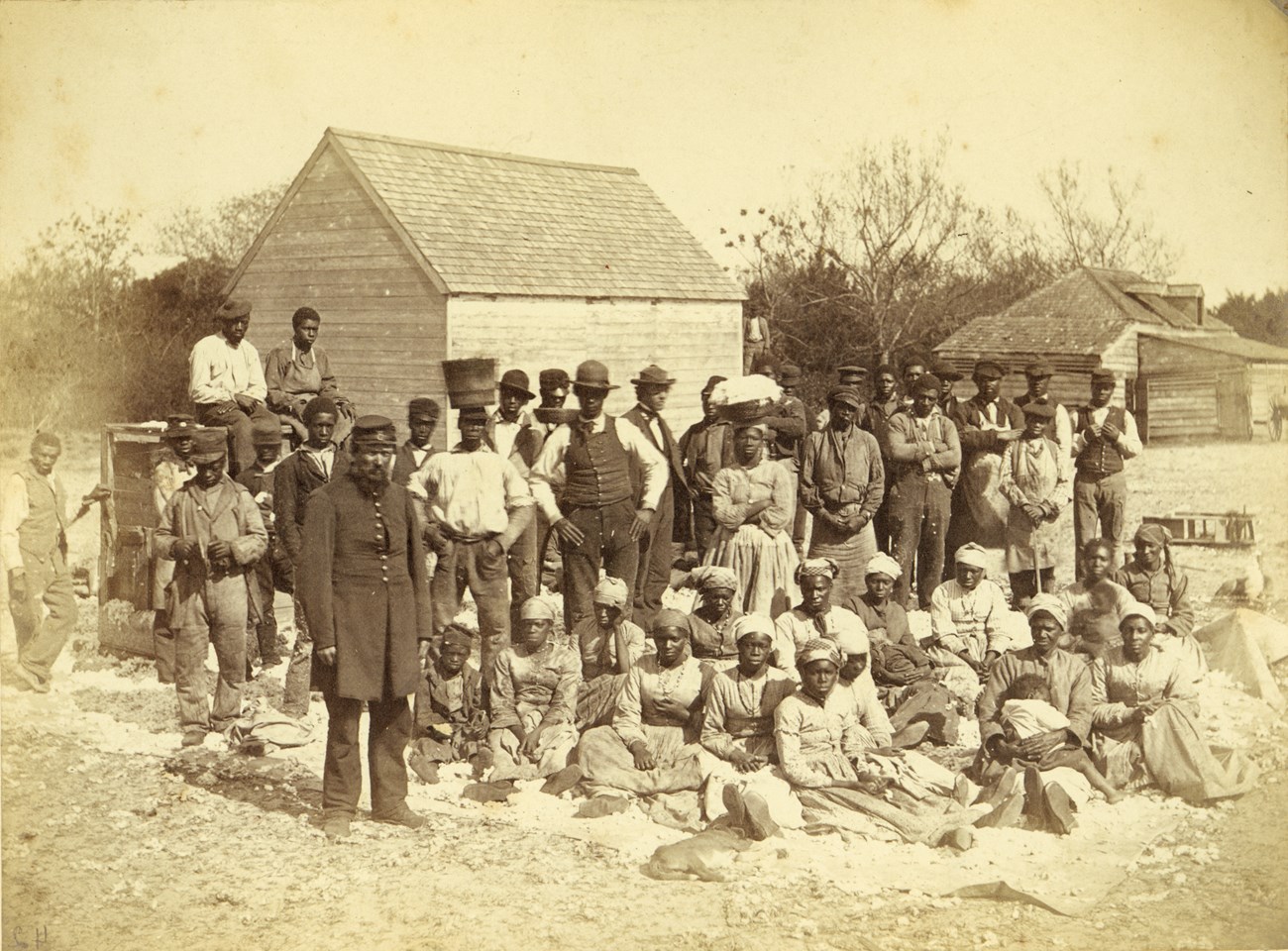Part of a series of articles titled The Port Royal Experiment.
Article
Labor Reforms of the Port Royal Experiment

LOC
Dozens of Sea Islands were included in the Port Royal Experiment between 1861 and 1865. Prior to the Civil War, islands like Port Royal, Parris, Ladies, St. Helena, Hilton Head, and others had been massive cotton plantations where thousands of people toiled in bondage. In early February 1862, Edward Pierce, a government agent sent to Port Royal, composed a lengthy report to Secretary of the Treasury Salmon P. Chase. Pierce reported that nearly 200 plantations had been abandoned, and nearly all were potentially strong financial investments for the government but would require laborers. He wrote, “I told them [the formerly enslaved people] they must stick to their plantations and not run about and get scattered… and we wanted them to stay on the plantations and raise cotton, and if they behaved well, they should have wages…”
This set the stage for one of the most important transformations undertaken by the Port Royal Experiment – the slow transition from slave labor to wage labor. To facilitate this, the US Treasury Department established a program in which the government and its appointed superintendents would take over management of the cotton plantations and begin to pay wages. In some ways foreshadowing the New Deal seventy years later, this was one of the first large scale efforts undertaken by the federal government to directly hire people for wages. Wages were small – typically only around $1.00 or so per bale of Sea Island cotton, with each bale weighing between 300-400 pounds. In addition to paying wages to work the cotton fields, the military hired formerly enslaved people. to work as cooks, wagon drivers, teamsters, nurses, and even personal servants to officers and government officials. An economy began to thrive as formerly enslaved people set up small businesses where soldiers could buy cooked meals, hire laundresses and seamstresses, or even buy fresh food from Black farmers.
Paying wages to the formerly enslaved people served two purposes for the government officials developing the Port Royal Experiment. First, it helped – they hoped – to provide a solution of where people should live. By 1862, people, such as Susie King Taylor, were escaping from bondage in the surrounding regions and making their way towards Beaufort. The region was beginning to swell with refugee camps. By paying wages to the people already on the plantations, they created a system where people would simply continue to live and work in their old slave cabins. They would continue to work their gardens and produce their own food to feed their families. But perhaps most importantly – it began to put cash into the hands of people who had toiled this land for generations. And many sought to use that cash to secure that land for themselves.
Last updated: March 12, 2025
